Flexible filaments are expanding now more than ever! Just like hard filament, there’s a wide variety: TPU, TPE, and soft PLA. And each comes with its own features and challenges. Flexibility offers both creative and practical applications, so we’ve compiled a list with a mix of both to inspire you in your printing adventures.
If you have some ideas about possible bendy 3D prints but don’t want to print with tricky filaments yourself, check out Craftcloud. You’ll have access to a wide range of materials and finishes, all with round-the-clock support.
Before we get to our list, let’s learn a bit more about this special type of filament!
The Basics
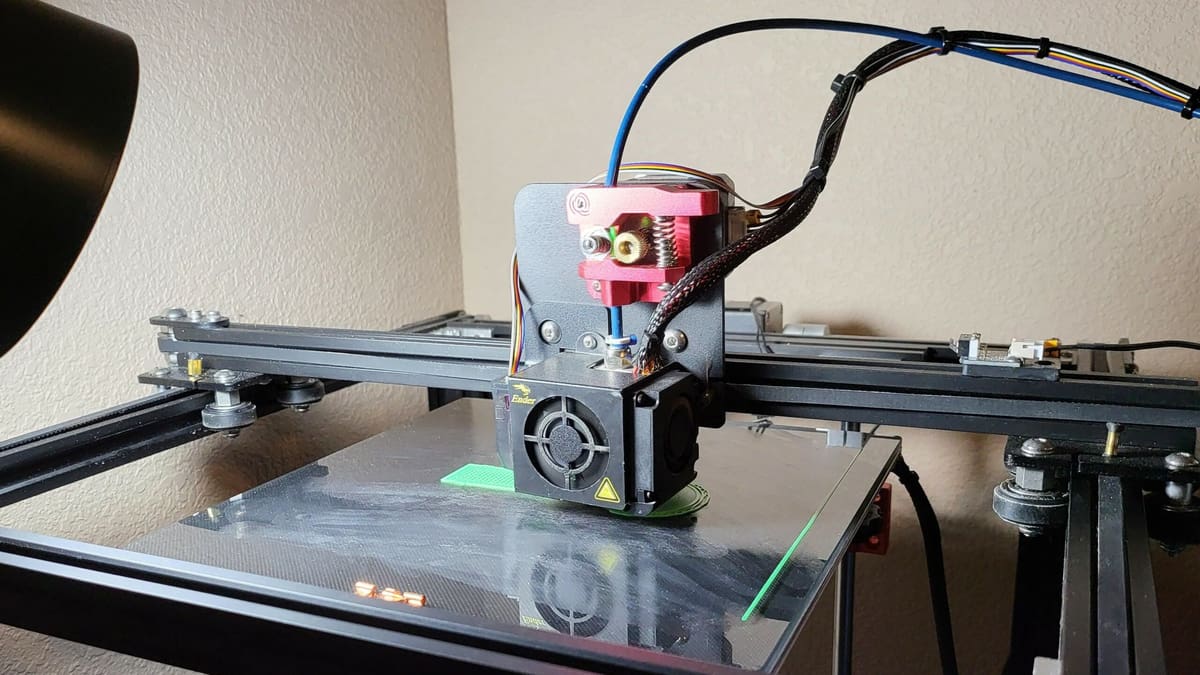
Flexible filaments have their own printing quirks, so let’s learn a bit more about these materials before jumping into ideas for your next project.
Shore Hardness
One of the most important considerations for printing with flexible filaments is Shore hardness. It can be used to gauge a material’s softness and is measured by its resistance to indentation when pressed.
Flexible filaments usually have Shore hardness levels ranging from 75A to 85A at 100% infill, but you may also see some ranging from 92A to 98A. The higher the number, the harder the material. You should always check the Shore hardness of flexible filaments in order to have a sense of their capabilities.
Retraction
When printing any flexible material, one of the most common mistakes is forgetting to turn off retraction in your slicer. Because flexible filaments are, well, flexible, retraction can create tension when pulling the filament back from the hot end.
This tension on the filament causes the material to extend and stretch, which will affect the filament’s diameter. This can easily cause clogs. So, if you do need retraction, make sure to lower the settings.
Bowden vs. Direct Extruders
Another factor to consider is your printer’s extruder. Most printers use a Bowden extruder to push filament into the hot end. To print flexible materials well, many claim you should use a direct extruder positioned immediately above the hot end. There is, however, some debate on this issue. Perhaps it’s safer to just say that depending on how old your printer is, you might have better results with a direct extruder.
Printing Recommendations

As always, if the flexible filament you’re working with has specific recommendations, it’s best to follow those. Otherwise, the following values are a good starting point:
- Hot end temperature: 210-240 °C
- Bed temperature: 0-60 °C
- Print speed: 5-30 mm/s
- Retraction: Generally off, but if you enable retraction, up to 3 mm at 20 mm/s
- Fan speed: Off for at least the first three layers, then 20-60%
- Extrusion system: Direct extruders are thought to be more successful, especially for older printers
Now that we know more about how to 3D print with these special filaments, let’s get to our selection of the best flexible models!
Personal Accessories
In this section, we’ve gathered a few common personal accessories that can be printed whenever you need them and customized to your liking!
Braille Training Cell

3D printed braille cells are an affordable solution for people with visual impairments. The designer offers cases with one or eight Braille cells, with each cell containing 6 pins. The pins are 6 mm in diameter and come in two versions: rounded or flat.
While the pins can be printed in other more common and cheaper materials such as PLA and PETG, printing them in TPU offers durability and comfort. The designer emphasizes that, especially for cases, the recommended option is a softer TPU, such as 92A, so that it doesn’t require much finger force to insert and operate the pins. However, comments such as Krisas Man’s indicate that TPU 95A can also work.
The case infill can vary according to your preference; some comments suggest values between 8% and 30%. The designer recommends at least 2 perimeters for the case.
- Who designed it? 3DPrinty
- How printable/popular is it? Three beautiful makes were shared in different colors along with several compliments and a remix.
- Where to find it? Printables
Watch Strap
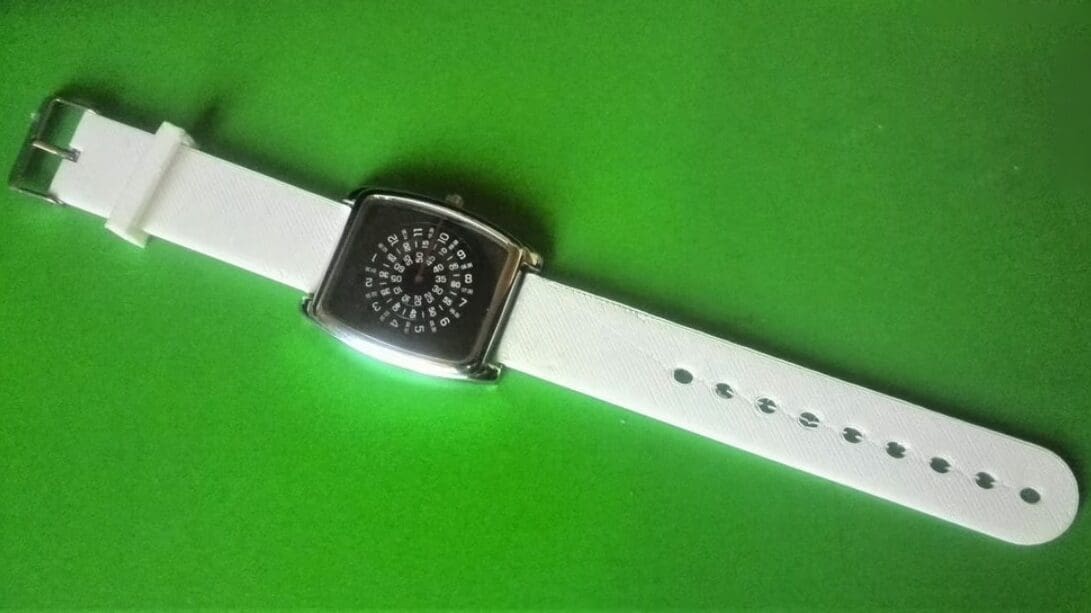
Got a broken watch band? Or want to change its color? Print a new one with this watch strap design! Thanks to Thingiverse’s Customizer app, you can easily customize this design’s length and width to better suit your watch and wrist size.
The designer suggests NinjaFlex, Filaflex, or Taulman 3D PCTPE. Additionally, you should print with 100% infill. Check out the designer’s instructions for guidance on swapping out the buckle and replacing the straps.
If you’d prefer just a bracelet without the watch attachment, there’s also a neat bracelet design from 3DMate. This easy print requires about two grams of filament, and it should take only 15 to 25 minutes. For the best results, the designer recommends a 0.2-mm layer height as well as a slower print speed.
- Who designed it? laird
- How printable/popular is it? This print has 6 recorded makes and 48 remixes.
- Where to find it? Thingiverse
Croc Shoes

Shoes are an excellent example of how 3D printing can combine practicality and creativity. In the category of casual footwear, Crocs blur the line between slippers and everyday shoes. Thanks to these adult and children’s models, you can print your own! You’ll find tables to help you scale the models to the exact size you need.
To achieve the ideal balance between flexibility and durability, it’s recommended to use TPU with a Shore hardness between 90A and 98A. To minimize issues, print on a textured PEI bed surface – especially if you choose to print without supports.
If you use supports, be prepared for a slightly longer print time: anywhere between 17 and 29 hours, depending on the configuration chosen. For both adult and children’s models, it’s recommended to use 0.2-mm layer height, 2 walls, and 12% infill.
- Who designed it? MakerVerse Designs
- How printable/popular is it? With more than 4,200 prints and 11,000 downloads, It’s definitely something that’s trendy.
- Where to find it? MakerWorld
Flexi Purse
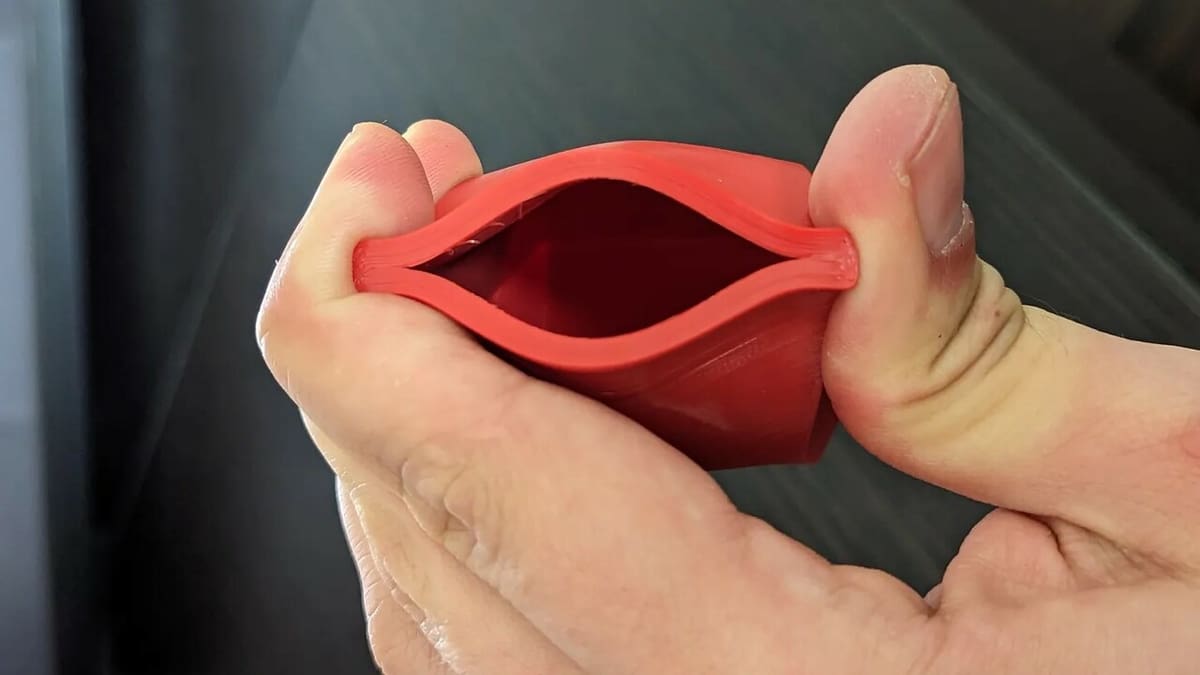
Tired of finding loose coins at the bottom of your bags (and everywhere else)? This little purse is perfect for keeping your change in one place. You can also use it for other purposes, of course. The flexible TPU body comes with optional latches that ensure it closes securely.
Keep in mind that you may need a knife or stylus to open the bag after printing, as the final layers may stick together. If bed adhesion is a problem, the creator recommends adding a brim.
- Who designed it? 3DPrinty
- How printable/popular is it? With 23 makes and over 1,200 downloads, this is a popular TPU print.
- Where to find it? Printables
AirTag Case/Keychain

Most of us have probably gone through the terrible experience of losing a backpack, wallet, luggage, or even an important key, and know just how important it is to keep our valuables safe. After all, some things just can’t be replaced.
Designed as a key finder, an AirTag is a device that helps keep track of important items. Printing a personalized one in flexible TPU will ensure that you can take the case on and off without breakage. There are three different versions to choose from, and the designer is available through Discord or Telegram if you want a customized version.
- Who designed it? t4obrien
- How printable/popular is it? So far, this gadget has 11 makes and around 626 downloads.
- Where to find it? Printables
Bracelet

This flexible bracelet is not only fun to play with, but will make a great addition to your daily wear. The design is expandable and takes advantage of TPU’s strengths. This is a simple print that you can use to test out different colors, and it also makes for a decent stringing test.
The designer was kind enough to also include a hollow version. Not only will it consume less material when printing, but it will also give you a chance to fill your bracelet with glitter if you like.
- Who designed it? Core3Dtech
- How printable/popular is it? With around 11,200 downloads and 69 unique makes across both sites, it’s safe to say that this model is both popular and printable.
- Where to find it? Printables, Thingiverse
Tech
In this section, we’ve found some useful tech-related accessories. From protective covers to cable organizers, these items can certainly come in handy and make life simpler.
Squeegee FEP Film Cleaner

Resin printer cleaning tools can be relatively affordable when purchased in kits, but being able to 3D print your own squeegee at a moment’s notice has its perks. The flexibility of TPU filament is perfect for avoiding damage to the FEP film when draining or cleaning the resin.
You’ll want to print the handle from a non-flexible material. You can easily swap out the rubbery TPU tip if it shows signs of wear and tear. There is a nice compliment in the comment section from a maker who made, tested, and approved the squeegee!
- Who designed it? tsuipo
- How printable/popular is it? So far, there’s only two makes, but that shows it’s possible to print your own.
- Where to find it? Printables
Joystick Caps
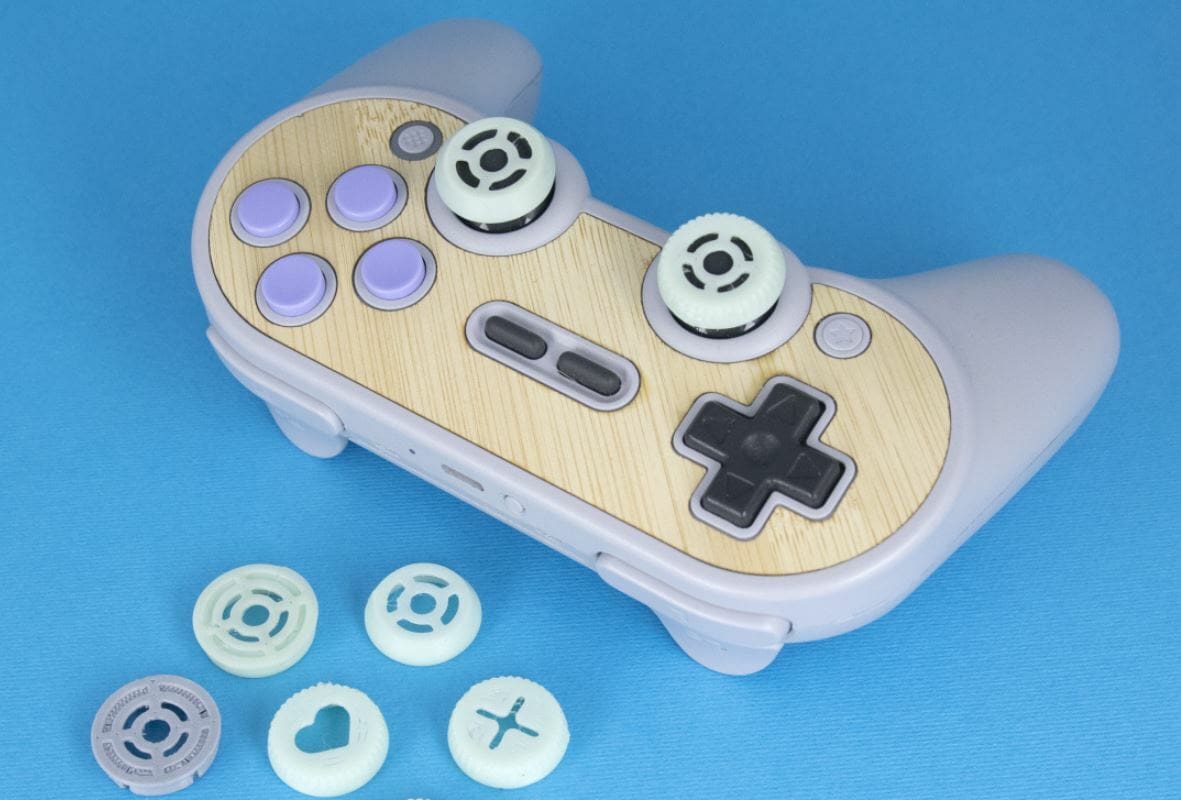
If you’re into console gaming or using a controller for other things (e.g. controlling a robot), these 3D printable joystick caps are a great way to add some visual flavor to your controller. You might even improve your aim, thanks to the improved grip on the joysticks.
The project contains a few joystick caps, each with a different design and tailored to fit an 8BitDo controller. While the designer stated that the caps are meant to be printed with a flexible material, they also included other files with “NonFlex” in their name that work with traditional printing materials like PLA. The maker of this project stated that they printed the models in NinjaTek TPU filament.
- Who designed it? MakeAnything
- How printable/popular is it? This set of flexible joystick caps has over 930 downloads as well as over 9,100 views.
- Where to find it? MyMiniFactory
Feet for MKS/3

These TPU feet replacements are a great addition to any Prusa MK3 or MK3S printer. The TPU provides a dampening cushion for the printer, eliminating excess sound created by the vibrations of the machine. This upgrade will make Silent Mode truly possible with your printer.
The designer recommends printing with a 0.3-mm layer height and 10 to 20% infill for the best results. Makers have expressed overwhelmingly positive remarks about this upgrade, with many recommending a standard 95A TPU for the right mixture of spring and sturdiness.
- Who designed it? Yun3D
- How printable/popular is it? This print has 17 community makes and 2 remixes showcasing the print in action.
- Where to find it? Printables
AirPods & Apple Watch Cases
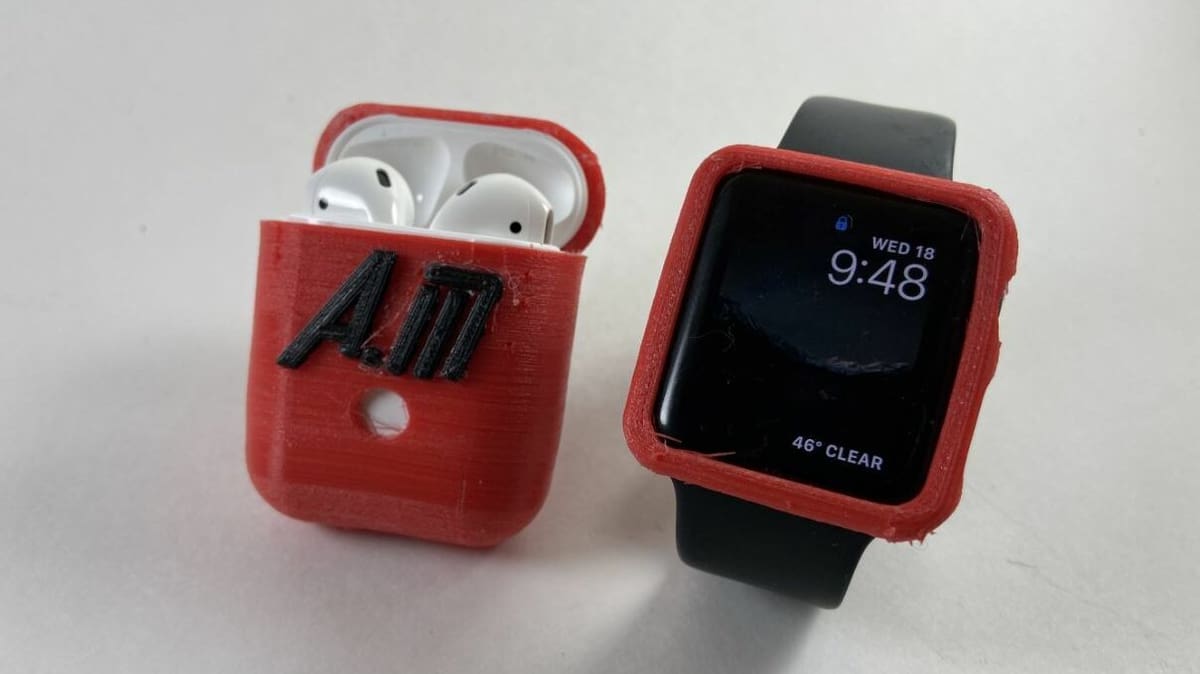
This matching case set is perfect for your Apple Watch and AirPods! Designed for the first generation, the AirPods case includes two parts: a case for the body and a case for the top. The Apple Watch case is simple and unobtrusive, so you’ll barely notice you’re wearing it.
Both cases are printed in TPU filament. The Apple Watch case takes about 40 minutes to print. The creator explains that they made the AirPod case with a slightly smaller dimension to make sure the case doesn’t fall off.
- Who designed it? AaedMusa
- How printable/popular is it? This case set has over 2,000 downloads with over 20,000 views!
- Where to find it? MyMiniFactory
Quest 2 Knuckle Straps

Virtual reality gaming benefits greatly from 3D printing. One way to make your time in VR more immersive is with these knuckle-style straps, which are designed for the Quest 2 controllers. They provide the luxury feel of an Index Knuckle Controller on a budget.
These knuckle straps allow you to let go of your controllers without the fear of them falling from your hands. This simple change can make all the difference when it comes to fully immersing yourself in your game.
The designer created two different versions, one for PLA and one for TPU. The TPU option takes advantage of the flexible nature of the material with an all-in-one wrap-around strap design. The PLA version will require additional supplies to complete the print. The designer recommends using some stick-on velcro on the inside of the strap for comfort, regardless of what material you use to print.
- Who designed it? thatdude902
- How printable/popular is it? This file has been downloaded over 2,400 times already. The community seems to love this strap, with 13 makes and 2 remixes already shared.
- Where to find it? Thingiverse
GoPro Case

GoPros seem to have an infinite number of uses. You can attach them onto just about anything and capture your adventures with detailed pictures, time-lapse movies, and more. With this case, you can keep your GoPro safe while you’re on the go.
The designer recommends printing the design with TPU. You should print this with supports activated because there will be overhangs no matter the orientation of the part.
Flexible materials should generally be printed with retractions disabled, however, for a part like this, you may want to either enable retraction with very minimal settings or to activate a form of anti-stringing mode. Otherwise, there’ll probably be some stringing.
- Who designed it? amolteni
- How printable/popular is it? This design has 10 posted makes so far.
- Where to find it? Thingiverse
Cable Ties
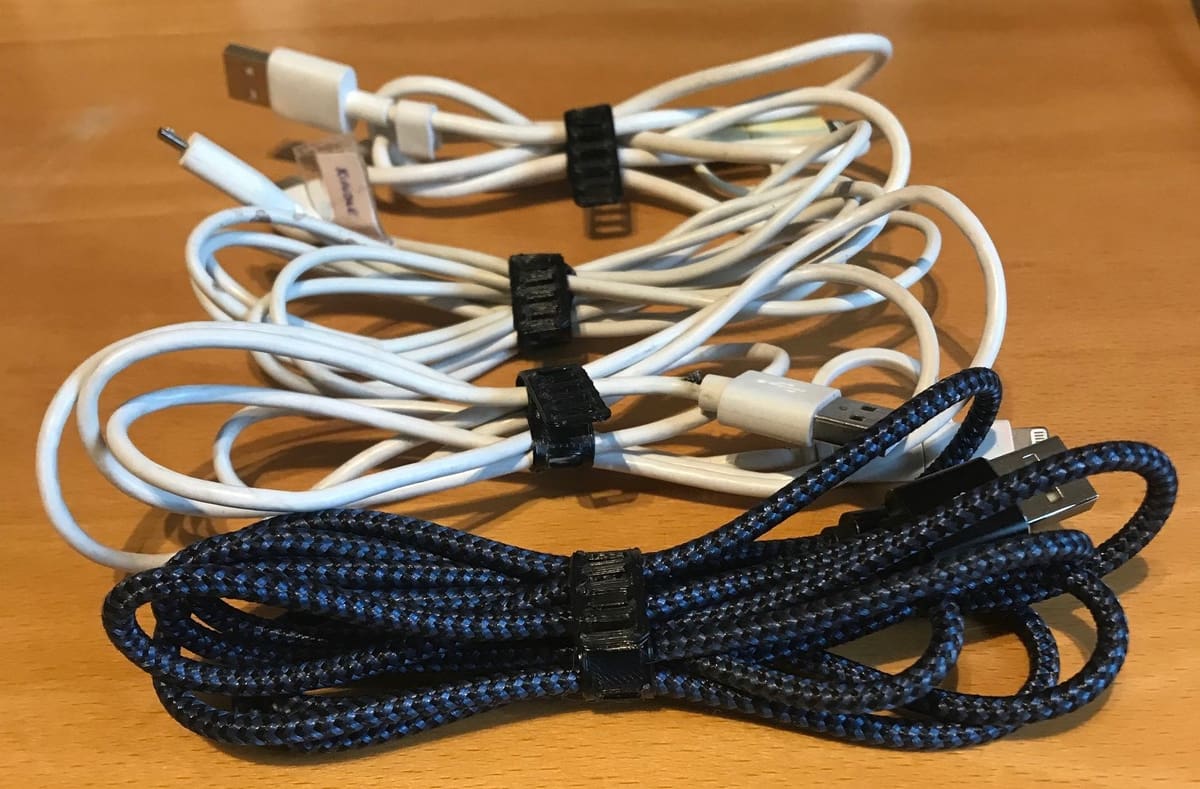
Do you never seem to have cable ties when you need them the most? These reusable cable ties will never fail in their purpose. Additionally, you can customize these ties to any length to suit your organizational needs.
The flexibility of TPU is perfect for getting a secure fit. If you have trouble with bed adhesion, there’s an optional disc that you can add to help the smaller end stay down.
- Who designed it? rainers
- How printable/popular is it? These cable ties have 14 recorded makes and over 45,000 downloads.
- Where to find it? Thingiverse
Home
We’ve uncovered the most useful flexible prints for your home. After testing them out, you’ll wonder how you ever lived without them!
Corner Baby Protection
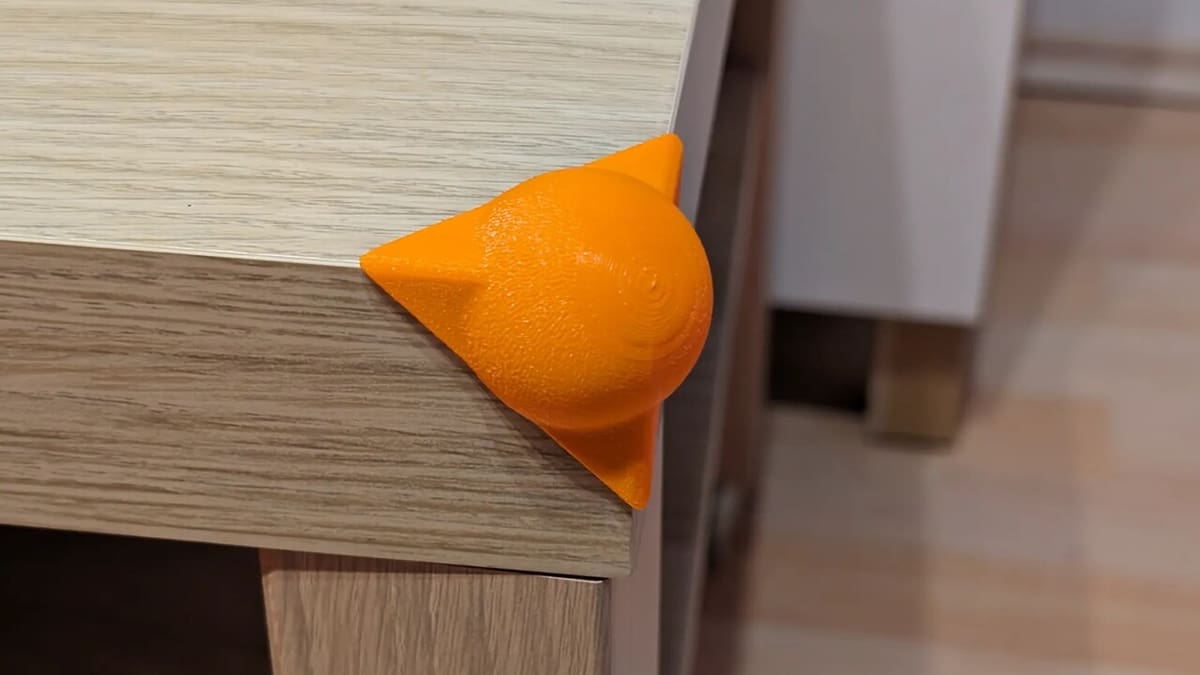
This is one of those models that exemplifies how 3D printing can transform simple objects into practical and personalized solutions for everyday life. The easy-to-attach design protects children and clumsy people from dangerous corners and edges. It’s an economical and smart solution that has already saved some shins and heads from unpleasant accidents, according to enthusiasts who have printed it.
Choosing the right TPU is essential. Users like gnux007 have reported that stiffer versions like the 95A TPU may not provide the ideal dampening. You might want to try a softer TPU.
The recommended print profile is 0.16-mm layer height, with 2 perimeter walls and 10% infill. Supports aren’t needed.
- Who designed it? chrisax212
- How printable/popular is it? This amazing idea has 160 downloads and 128 prints so far.
- Where to find it? MakerWorld
Hose Adapter

Whether in the garden, kitchen, or workshop, hoses are helpful tools. This hose adapter makes it easy to connect two different hoses or other forms of tubing, and the model is printed in a flexible material so that the tubes can bend. In Thingiverse’s Customizer app, you can adjust the design’s parameters (e.g. diameter) to make the model meet your needs.
While the designer didn’t provide any printing tips, one maker posted a great print and listed a few of the settings they used. They used a standard 0.2-mm layer height with a 50% infill density.
- Who designed it? Paul_Tibble
- How printable/popular is it? This design has 3 recorded makes and an impressive 1,100 remixes! You should be able to customize and successfully print your own hose adapter like so many others have done already.
- Where to find it? Thingiverse
Air Duster
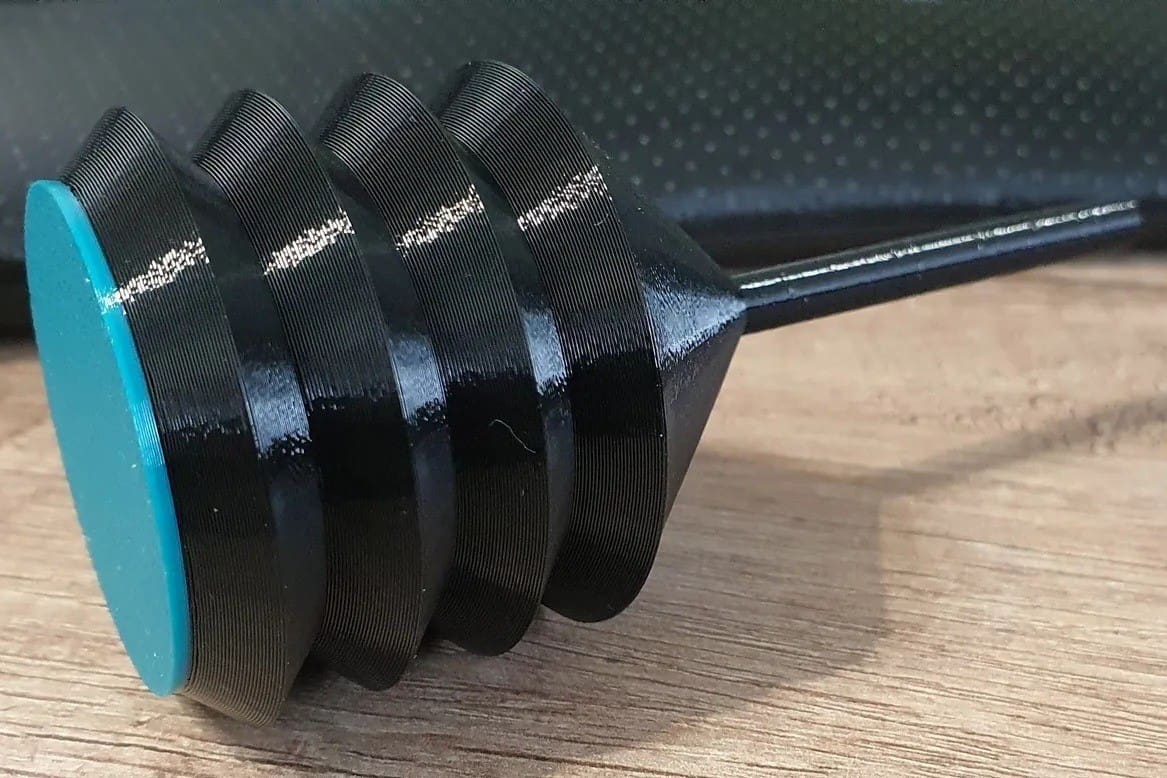
If you’re tired of spending money on canned air and want a cheaper alternative, this is the print for you. This air duster is printed entirely in TPU as a single piece. It has a hollow interior that, when compressed, will shoot air out of the tiny nozzle for surprisingly effective results. Use it to help clean out your computer and electronics, or to reach tight spaces around the house that don’t get dusted too often.
While the model is designed to be printed entirely from TPU, the designer recommends printing the base of the model with PETG for a solid base that has less potential of collapsing after continuous compression. You can find extensive details on how to get the best results for this model in the description. Many makers suggest slowing down print speed for the best results.
- Who designed it? Danthe3DPrintingDad
- How printable/popular is it? This model has already found 2,900 downloads, with more than 65 shared makes.
- Where to find it? Printables
Doorstop
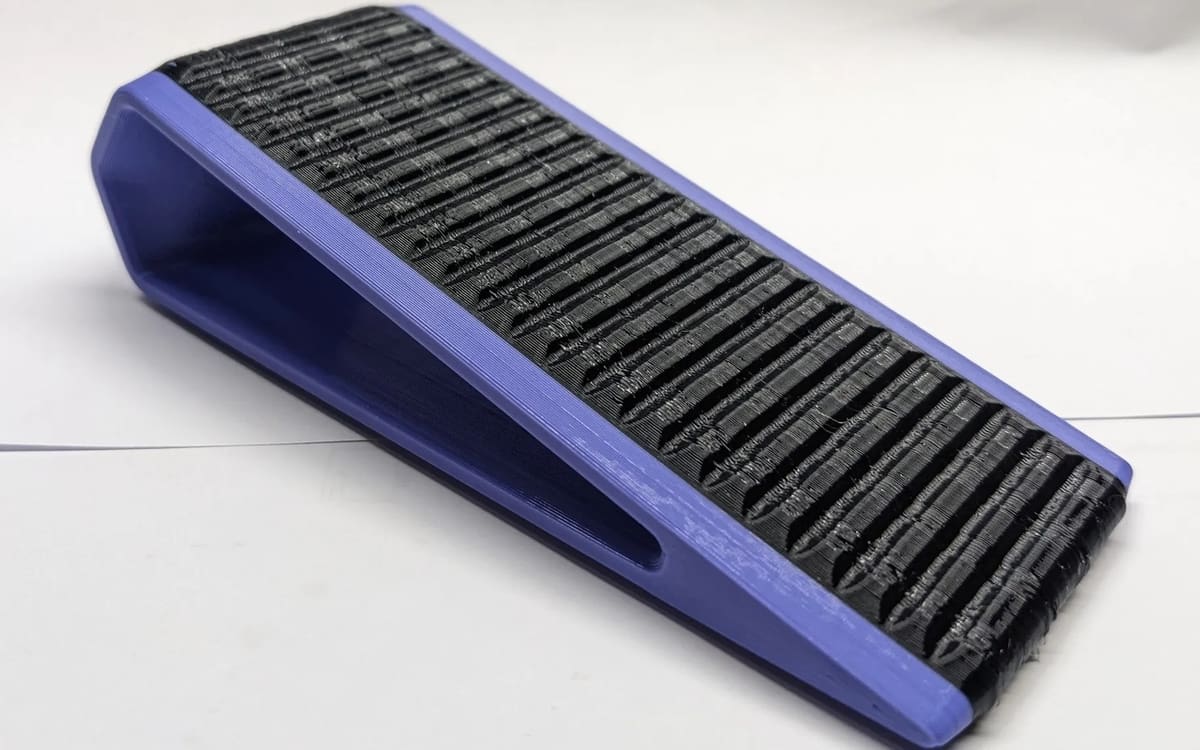
Doorstops are something that you always seem to need and never seem to have around. Printing your own doorstop will ensure that you have one for every door in your home. This model is designed to be printed in multiple materials, with a sturdy PLA or PETG base and a flexible TPU cover for better grip on the door and floor.
If you’re set on printing the entire doorstop out of TPU, the designer has included a fully assembled file, so you won’t have to print more than a single part. Some makers have mentioned that the TPU requires glue or other adhesives to stay in place once assembled, so keep this in mind if you’re having a tough time with assembly.
- Who designed it? Extrutim
- How printable/popular is it? You can already find 31 makes of this model posted on Printables.
- Where to find it? Printables
Pet Paw Cleaner
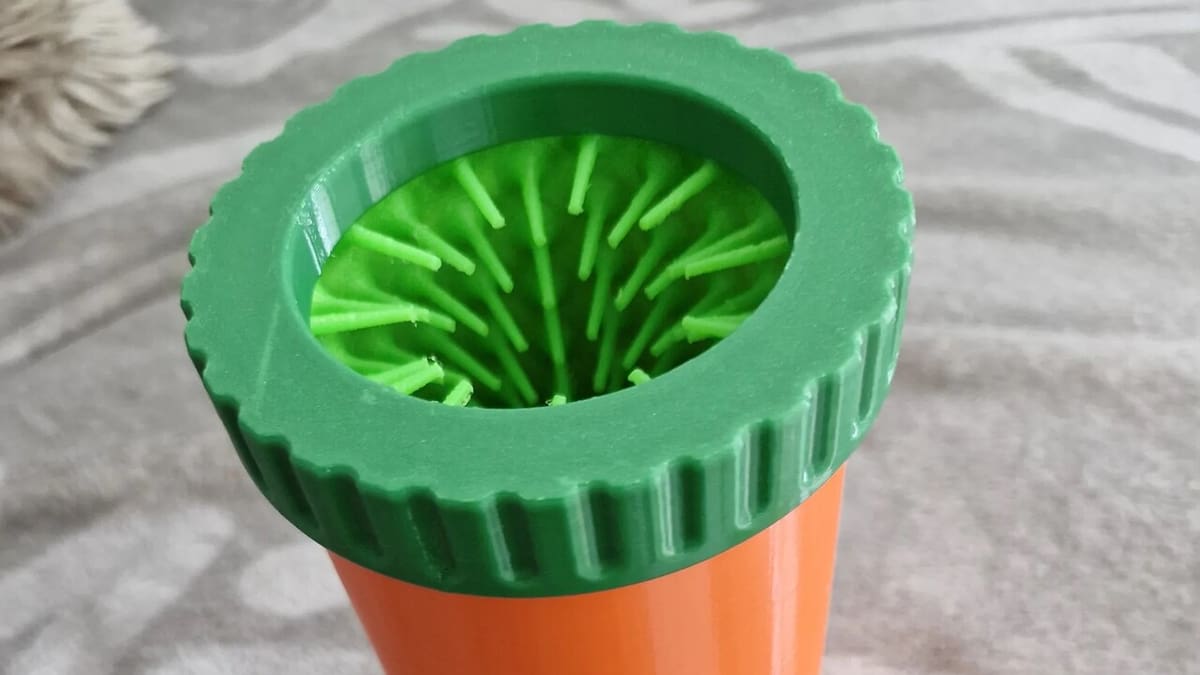
Imagine coming back from a walk with your dog, ready to relax, only to find a muddy carpet. This model allows you to clean your pooch’s paws easily and quickly before they can wreak havoc on your floors and furniture. To use the Pet Paw Cleaner, simply fill it with water, place your pet’s paw inside, and gently rotate it so that the TPU bristles do their work.
The lid and container should be printed in PLA or PETG for greater durability; only the internal bristle mat is printed in TPU. Depending on the hardness of the TPU used, the bristles may be too stiff for small or more sensitive pets. Comments from makers suggest cutting the bristles to make them thinner or reducing the size by 25%. However, you can also try softer TPU filaments, such as 92A.
Another detail is the screw cap, which some users have reported being too loose or too tight depending on the printer calibration. Adjusting the scale to 95% or 98% at the time of printing can solve this problem according to thevgm01. The estimated printing time is 11 hours with a layer height of 0.2 mm, 2 outer walls, and 15% infill.
- Who designed it? OP Design
- How printable/popular is it? Although tolerances bring some small challenges, 207 prints have already been shared.
- Where to find it? MakerWorld
Drink Can Lid

If you enjoy carrying carbonated beverages around with you during parties and family gatherings but are slow to finish your drink, you may want to print a few of these TPU can covers. The lid fits snuggly around standard-sized cans and will help prevent carbonation from leaking out of the top of an open can. They also help to prevent spills should you accidentally knock your can over.
This is a great print for adults and children alike and can be a great item to pass out during large gatherings. The designer offers two models with different sizes, should you want a tighter or looser fit around your can. Print out multiple lids in different colors to help color-code drinks for everyone!
- Who designed it? MakerCameron
- How printable/popular is it? This model is quickly gaining in popularity, with around 50 makes shared from over 3,100 downloads.
- Where to find it? Printables
Quick Towel Hangers
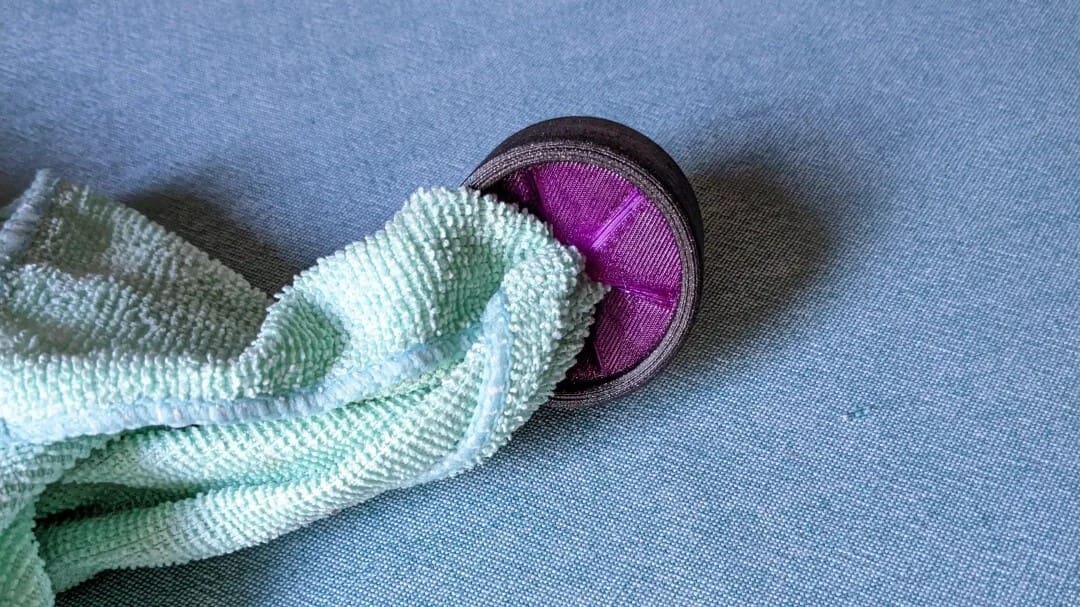
Forget about 80s hooks and flimsy clips that turn into real breeding grounds for bacteria, this towel holder is a practical and modern solution. It uses a grip ring printed in TPU to hold your towel in place. This simple design can be used in a wide variety of environments, keeping your towels safe and always within reach.
To ensure successful printing, use TPU for the grip ring with 100% infill and PLA for the other parts with a standard 0.2-mm layer height and 20% infill. No supports are necessary. In fact, reviews like Peepee poopoo’s indicate that removing the support rings can be quite a hassle.
Assembly is a piece of cake. Just fix the base to the wall with double-sided tape or screws, and fit the ring between the base and the lid. You can even customize the color combinations as you’d like.
- Who designed it? geit_de
- How printable/popular is it? With seven makes and a remix, it’ll be easy to change the look of your space to something more modern.
- Where to find it? Printables
Hex Wrench Holder

Whether you have a lot of different 3D printers or old tools scattered around your workshop, having a place to put all of those hex wrenches will make finding the right one when you need it much easier on yourself. Such a small, useful print can also make a great gift for your DIY friends!
This print will organize your hex wrenches, and it’s capable of holding nine different sizes ranging from 1.5-mm wrenches up to 10-mm wrenches. Printing this wrench holder in TPU will ensure a firm grip on your wrenches while adding durability. Wrench sizes are indented into the print. The designer suggests using a pen or marker to color them in after printing.
- Who designed it? asimomagic
- How printable/popular is it? With over 2,000 downloads, you know this print is seeing use across many different hobbies.
- Where to find it? Thingiverse
Vice Soft Grips

Here’s another useful TPU print. These soft grips are the perfect addition to any workshop, giving your vice grip a gentle touch for more delicate projects. Covering your vice grips can also prevent them from creating an unwanted texture on whatever object you are working on at the time. The use of TPU makes putting these sleeves on simple and gives a good cushion to their touch.
While these specific grips are designed to fit onto a Morgan Milwaukee Vice, the designer has included their STEP files so anyone can make the changes they need to cater the design to their specific vice.
- Who designed it? khalfrenzy
- How printable/popular is it? This file may only have around 440 downloads, but it’s the perfect file for a specific type of person.
- Where to find it? MyMiniFactory
Beer Guard

This is something that maybe you’ve spent your whole life needing, but you just didn’t know it yet. It’s basically an attachable bottle cap so nothing can accidentally fall into your beverage. Printed in multiple distinctive colors, it’s also a good way to identify which bottle is your own.
There are two versions of the model, with the only apparent difference being a tab on the most recent version that helps with removing the cap. Based on uploaded files, this should be a fast and straightforward fast print.
- Who designed it? Ambifox
- How printable/popular is it? 13 makers have shared their prints.
- Where to find it? Thingiverse
Water Bottle Sleeve
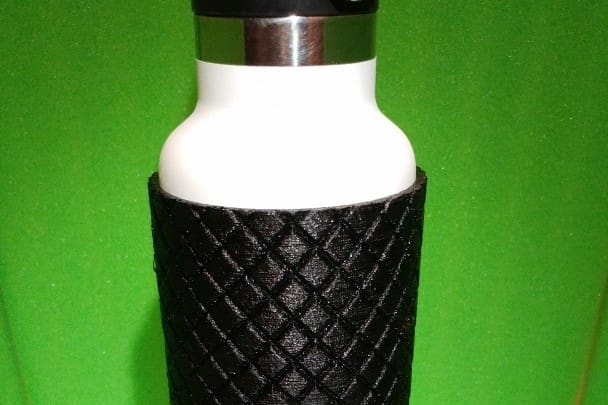
Has your water bottle suffered from numerous dents and scratches? With this sleeve, you can protect your water bottle from damage. It also offers extra grip, making your bottle less slippery.
Though the sleeve is designed for a 21-oz. Hydro Flask, you can always scale the file to customize the sleeve to your water bottle of choice. Just be aware that the detail may increase the printing time.
The designer printed the model with SainSmart TPU but says any flexible filament will work. If your printer can handle the first couple layers of the pattern, the rest is just repetition, so you should be fine.
- Who designed it? jlbimson
- How printable/popular is it? This water bottle sleeve has over 440 downloads and more than 6,600 views.
- Where to find it? MyMiniFactory
Just for Fun
Finally, check these creative prints for humans and pets alike. The fun will be never-ending!
Airless Tennis Ball

You may have seen similar airless ball designs bouncing around. Now, we have an airless tennis ball to play with as well. The ball is designed to withstand impacts and provide a similar experience to a traditional tennis ball without requiring any inflation to keep its bounce. The model doubles as a pickleball as well.
For the best bounce, TPU with a Shoreness rating of 98A is recommended, as lower ratings will dampen the ball’s bouncing capabilities. You can also use PLA Flex, as shown by the designer’s images. If you’re interested in these airless ball designs, filete3d has plenty of other designs available for different sports.
- Who designed it? filete3d
- How printable/popular is it? This is quite a popular model, with over 8,600 makes and 11,900 downloads according to MakerWorld.
- Where to find it? MakerWorld
Traffic Cone
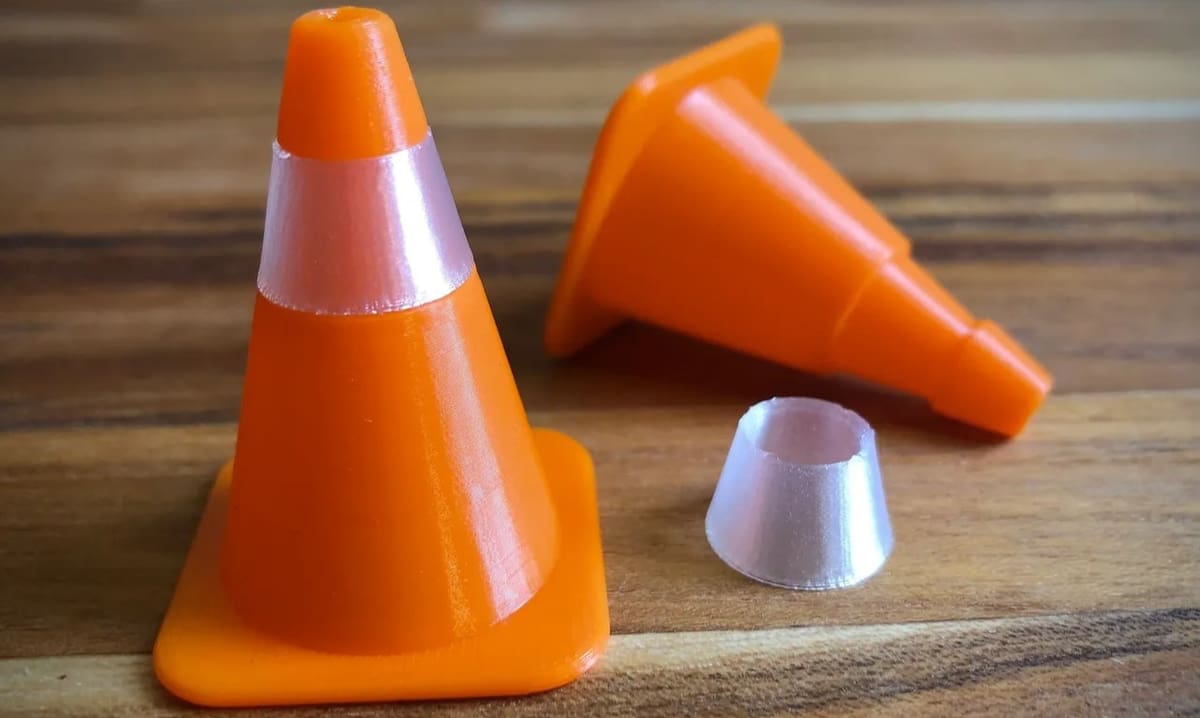
Whether used as a toy, desk decoration, or to organize small construction zones, this simple two-piece TPU print is sure to come in handy. The best part is, you won’t need to worry about supports.
The model in its original size measures 31 x 31 mm at the base and 41 mm in height, but you can also test larger sizes. There are makes reporting success with up to 130% increase in scale. If you’re experiencing stringing, the designer recommends aligning the Z seam to one side of the cone to reduce travel lines.
- Who designed it? AaronPark
- How printable/popular is it? This design already has 12 makes and over 700 downloads.
- Where to find it? Printables
Cat Toy
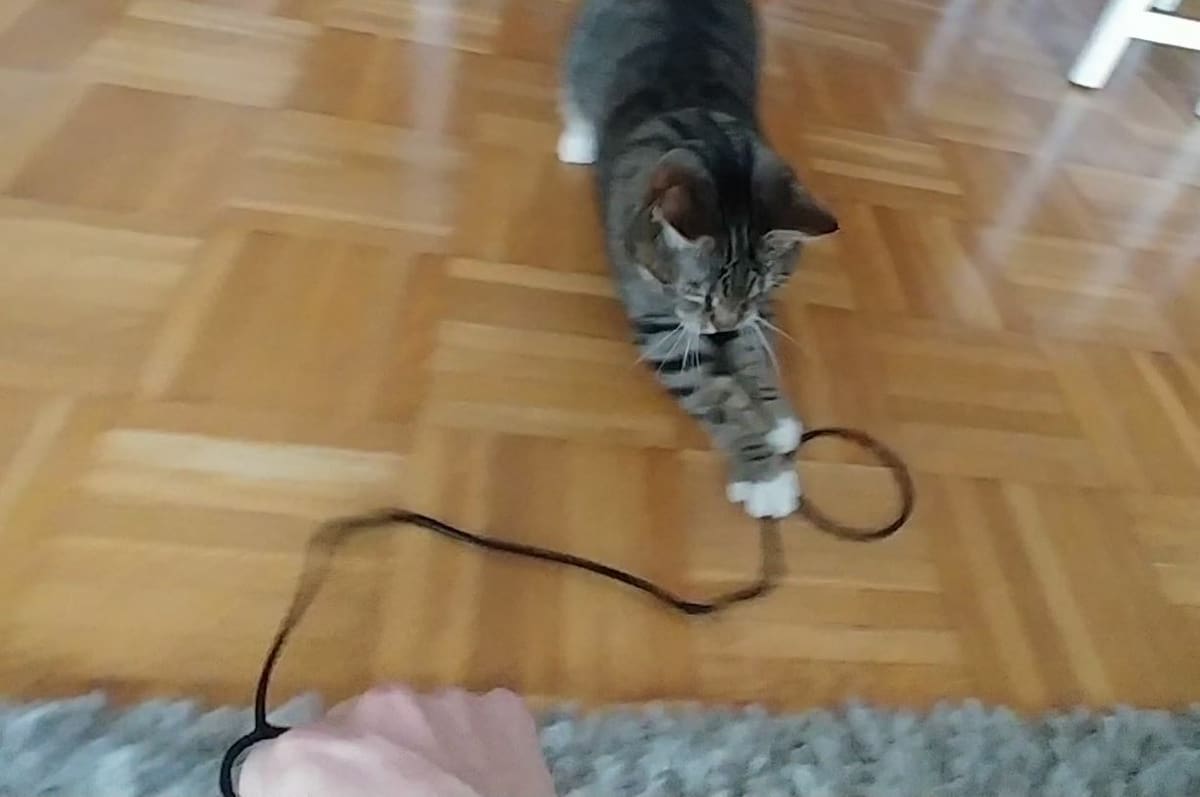
Having fun with cats is a great way to spend an afternoon and is even better with some toys for your pet.
This 3D printable toy will have your cat running circles around the room, and it follows a pretty simple design, with two circles connected by a curved strand. This design is meant to be printed in a flexible material to ensure that the long strand can bend but still comes back to its original shape.
The maker of this model printed their cat toy in TPU filament on a Prusa i3 MK3S+. They also listed that the print took under 2 hours and consumed around 14 grams of material.
- Who designed it? Marvin
- How printable/popular is it? At least 12 kitties are happily playing with this TPU toy.
- Where to get it? Printables
Slingshot

This slingshot won’t disappoint! Despite its small size, it works really well and beats the rubber band-through-the-fingers variant by a long shot. The maker hints at large marshmallows for ammunition; so beware, food incoming!
This print is very simple, and as there are no overhangs, does not require any supports. The creator used Priline TPU, but any flexible material should work. Additionally, the model comes in three sizes to accommodate different finger sizes.
- Who designed it? MechEngineerMike
- How printable/popular is it? This slingshot has over 6,200 downloads and 3 posted makes.
- Where to find it? Thingiverse
Banjo Mute

This mute helps control the noise of your banjo, so you can play all night without disturbing the neighbors. The mute attaches to the bridge of the instrument and needs to be printed with a flexible material to effectively absorb the sound. To hear just how much this mute can reduce the sound of a banjo, watch the video below!
The designer stated that this model is easy to print, and you can use whatever slicer settings you usually use for printing flexible materials.
- Who designed it? Clockspring
- How printable/popular is it? This banjo mute model has over 4,900 views with around 220 downloads.
- Where to find it? MyMiniFactory
Bike Grips
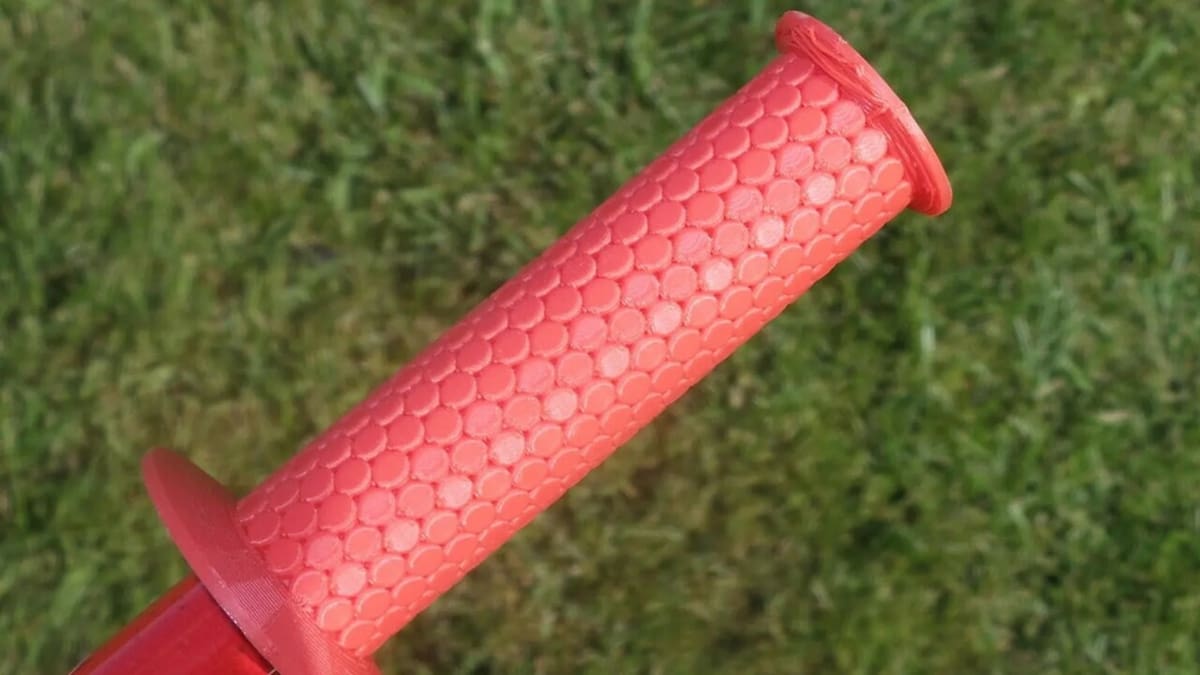
How about customizing your bike with a stylized grip? Or simply replacing a worn-out one? For those who love sports and bikes, it’s always good to have options at hand. Sizes are for bikes with 7/8 handlebars.
For flexible printing, it’s recommended to reduce the size a little for a tighter fit, and no supports are needed. If you want to make any modifications, there’s a link on the template page that takes you to Tinkercad.
- Who designed it? jayden17
- How printable/popular is it? So far, 11 makes have been shared.
- Where to find it? Printables
License: The text of "TPU Prints: 30 Cool Things to 3D Print with TPU" by All3DP is licensed under a Creative Commons Attribution 4.0 International License.



